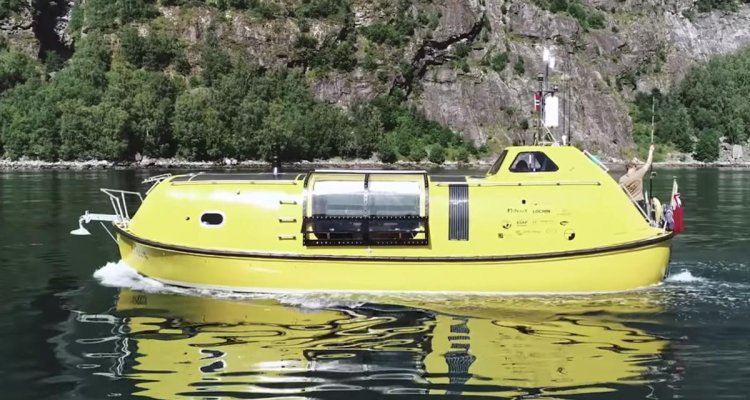Alaskaflyer
Guru
That video is two boats crossing a bar returning from the Tasman Sea, at Greymouth IIRC. I find it interesting because the lead boat is sporting a batwing. Otherwise it could be any open Pacific bar crossing 
Last edited:
Fish if I can impose again. For nearly the last decade been doing two non stop passages per year. Either Norfolk/Hampton/oriental to ViIs or Antigua or Newport to those Caribbean destinations in the fall (November). And Antigua or BVI to Newport in the spring.
From the benefit of your and Peter’s experience and expertise it seems that will need modification. Down will be inside the Gulf Stream until the straits of Florida. Then straight shot across one of the cuts to the Caribbean Sea. Once on the non Atlantic side of the islands then go to those destinations in the fall. Island hopping up the chain during the winter picking up the Gulf Stream north of the straights of Florida to Newport in the spring.
From your experience does that sound reasonable in a small recreational trawler? Sorry about the thread hijack but thought others might be interested as well.
If you haven't already, I'd suggest reviewing the DDs, esp. the steel-hulled DD462, which I think is available new for under $1m.Thanks Fish. So if contemplating this activity in a recreational boat of smaller size you’re likely not have passive techniques at your disposal. Hence, great attention must be paid to redundant fuel filtering and bulletproof engine systems. Having 2 independent AP systems would be a plus and great attention to the strength of the steering mechanisms. From what you’ve saying a modified DD or N are the only current choices in my price range of ~$1m or less unless I come across a one off designed for that use, the current discussion above about running would seem moot as being overwhelmed is an unacceptable risk.
I've also watched that video and while it is confused and very turbulent it's not a very big sea and doesn't appear to be open water offshore. I get that many on here have never been in a fifty or sixty foot sea with winds exceeding 80kts, and no one expects them to have been. It's easy to scoff at the possibility of encountering such conditions or pretend that so and so boat can handle those conditions but until you've actually done it I'm afraid it's all conjecture. I've been in those conditions numerous times on boats as small as 70 feet and trust me you don't want to be there in a small planing or SD hull pleasure boat regardless of tactics.
As you say:
"I get that many on here have never been in a fifty or sixty foot sea with winds exceeding 80kts..."
"... you don't want to be there in a small planing or SD hull pleasure boat regardless of tactics."
What I say and mean:
For God's Sake of course not. However, those sea conditions are not what is being discussed... at least not what my experience is and not what I'm implying regarding pleasure boat handling in relatively mellow following sea conditions.
Unfortunately, "offshore" does not have a strict definition so it can mean different things to different people. If you want to have a discussion about offshore boating, it would be better to define what you mean. The definitions are vague. I did find at least one definition that said: "Offshore means situated or happening in the sea, near to the coast."
Offshore oil rigs are generally several miles from shore, usually not hundreds. So it is easy to have conflicting interpretations if you don't qualify it. The OP said he wants to fish off the coast, but never really said how far out.
Well the USCG seems to think it's 200 nautical miles from land, inside that they call "near coastal" so I sort of follow their lead.
Gotta love it. We cant even get a firm definition of a 'trawler' and now, we want a definition of 'off shore'?
Well we can all agree that we all have an opinion, I have mine, you have yours, they have theirs, they are apparently all different but at least there is one consensus, we all have an opinion.
Have we yet to tackle the definition of a boat? LOL
These discussions should focus on physics and basic realities. Boats dependent on form stability are more at risk. Boats that can’t survive a knockdown are more at risk. Boats with unfavorable Gz curves are more at risk. Boats subject to down flooding are more at risk.
The Seapiper is not an offshore boat imho. Too small ( resistance to capsize and pitchpoling is in major part a function of size, AVS, displacement and speed of clearance of green water), camping not living on passage so fatiguing on crew, and mechanical access difficulty in a seaway. That ad drives me nuts.

I always thought something like this might make a fair offshore powerboat.View attachment 119105
I always thought something like this might make a fair offshore powerboat.View attachment 119105
Fish[IMG said:https://www.trawlerforum.com/forums/attachment.php?attachmentid=119105&thumb=1&d=1625583851[/IMG]
This is what you end up with when you get obsessed with the fear of infinitesimally small risks. Its like wearing a kevlar bodysuit every time you go swimming in the ocean because it is theoretically possible that a shark will eat you.
